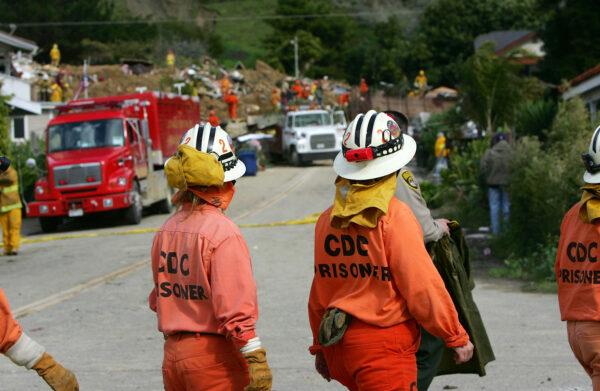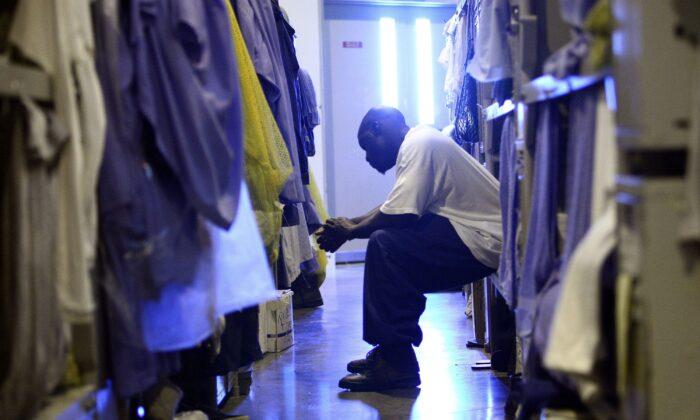California’s Department of Corrections and Rehabilitation is considering a proposal to increase pay for most inmates working in the state’s prison system.
According to the proposal, such would “ensure its inmate population is treated with dignity and has the resources and skills needed to transition back to society” by increasing “inmate pay … commensurate with the job skill level, and also be deemed fiscally responsible based on inflation.”
Noting the decades-long gap between pay raises, officials are suggesting boosting pay across five levels of incarcerated workers—with exceptions for those employed in manufacturing and similar operations—and for all four grades of those employed in conservation camp programs where low-risk inmates are used for firefighting and fire prevention efforts.
“The department is proposing these regulations to increase inmate worker pay by providing better incentives to accept and retain jobs,” the department’s proposal reads. “In addition to a paycheck, work assignments build technical and social skills, instill accountability and responsibility, and prepare inmates for careers after incarceration.”
Proponents say such is necessary to align with average inmate pay across the nation—with California’s average lagging behind by nearly 50 percent—and to account for inflation—with the proposal suggesting increasing wages for the lowest paid workers from 8 to 16 cents per hour up to 37 to 74 cents per hour for skilled workers.
One group fighting for the increased wages said such is a move in the right direction but fails to meet the state’s $15.50 state minimum that some are seeking.
“In the abstract, that sounds significant, but since the starting wage is currently so low, it amounts to increases measured by nickels and dimes,” Oakland-based nonprofit Legal Services for Prisoners with Children said in a Nov. 15 statement.
Pay has remained flat for approximately 30 years, with the last adjustment in 1993 when average rates of 20 cents per hour were established, which amounts to 42 cents per hour today based on inflation.
Pay is also subject to garnishment for court ordered restitution payments to victims amounting to 55 percent of wages earned while incarcerated.
“Therefore, increased pay amounts will increase restitution payments for victims of crime and allow inmates to save more money in preparation for release,” the proposal reads.
About 40 percent of the state’s approximately 96,000 inmates work while incarcerated, a statistic officials are looking to improve by changing work assignments from full-time to half-time, ultimately seeking to have 75 percent of positions half-time, according to the corrections department.
Some skeptics, however, have questioned the math with some prison reform advocates calling the changes deceptive, as doubling pay while halving hours results in the same amount paid.

Such, the department says, would be done so that inmates can not only work for wages but have more time to participate in other unpaid rehabilitative programs without additional cost to the taxpayers.
By reducing work hours, inmates will be expected to attend counseling and other treatment programs designed to prepare them for eventual release.
“Many incarcerated people with full-time assignments are not available to attend rehabilitative programs if they conflict with their work schedule,” the department’s website reads. “These changes expand opportunities for incarcerated people to work and program, earning them a paycheck as well as credits for successful completion of programs.”
Additionally, the proposal would eliminate all unpaid work assignments, including roles in dining rooms and yards to incentivize paid work assignments that can better benefit the state—as some positions filled by inmates, including clerk and office-based roles, can alleviate state employee workloads, according to the proposal.
Following a public hearing Nov. 22, after approximately six weeks of public comment submissions, the department is reviewing the proposal with a decision expected soon.
One group said the wages remain far too low, thus prohibiting victims from receiving restitution and inmates from saving for release.
“Saying that we’re doubling wages for incarcerated workers doesn’t speak to the reality of what they deserve in terms of the labor that they’re doing, but in terms of what is realistic for them to be able to build financial security,” Katherine Paseman, California campaign manager for One Fair Wage—a national nonprofit focused on “abolishing subminimum wages”—said during a Nov. 16 press conference. “This is a clear legacy of slavery that has to be reformed in California.”
If approved, the new regulations will become effective April 1, 2024, according to the corrections department.







